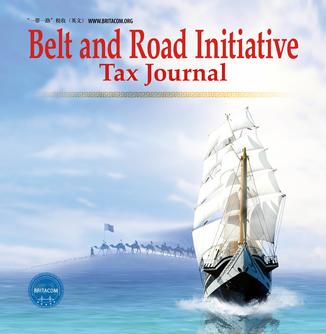BELGRADE, April 28 (Xinhua) -- The Serbian Museum of Science and Technology in the heart of Belgrade, long known for celebrating industrial and scientific milestones, has taken a bold leap into the future.
Where vintage power systems, early computing devices and a Tesla induction motor once stood as testaments to past innovation, holograms now shimmer in the air, casting their futuristic glow over the old.
A new exhibition titled "Light of Friendship: 70th Anniversary of China-Serbia Friendship in Holography" brings this unique fusion to life, inviting audiences to experience technology and art in brand new ways.
"I'm a frequent visitor here, and this is something completely new," said Sanjin, a local working in new media art. "I've never seen holograms like this in person. My favorite part is the dark room with the glass sculptures. They're absolutely stunning."
Jointly organized by the Serbian Museum of Science and Technology and the Holographic Arts Center of the Beijing Institute of Graphic Communication (BIGC), the exhibition showcases 70 holographic works, covering themes such as nature, ecology and humanity. The series is displayed across the museum's permanent exhibition areas and a dedicated gallery space.
In one corner, a 123-year-old self-playing piano is paired with a holographic musical score. Nearby, a glowing portrait of Serbian-American scientist Nikola Tesla hovers beside a century-old generator.
In another room, Chinese cultural icons such as the Sanxingdui mask, a blue-and-white porcelain plate and the "Big Snowflake" torch from the Beijing 2022 Winter Olympics, are floating midair, etched by beams of light.
For visitors like Maya and Leila, students from the University of Belgrade, the exhibition left a strong impression.
"We've never seen holograms like these before," they said. "It's something new for Serbia, and it really shows the connection between our country and China. We like it very much."
For Sanjin, the implications go far beyond art appreciation.
"China is so advanced in tech right now, and we don't yet have much of this here," he said. "This has huge potential, not just culturally, but commercially too. I work in event production, and I can already imagine how many clients would want to use this kind of tech."
Wang Shuo, director of the Holographic Arts Center of BIGC, said that "light" was chosen as the exhibition's theme to symbolize the enduring connection between China and Serbia -- reflected in the artworks' integration of both cultures, the collaboration behind the exhibition and the promise of future exchanges.
"The exhibition is filled with passion and creativity. There's an invisible spirit behind this kind of cooperation. Just like holography -- when a beam of light shines on it, energy bursts forth," said Wang.
The museum's director, Zoran Levic, described the event as a landmark moment. "It's the first time Serbian audiences are seeing and interacting with holographic artworks."
"Our museum is known for showcasing old technology. So this meeting of old and new is very special," said Levic. "To predict the future, you must first know the past. The past is here, and the future is hanging on the walls."




 A single purchase
A single purchase









